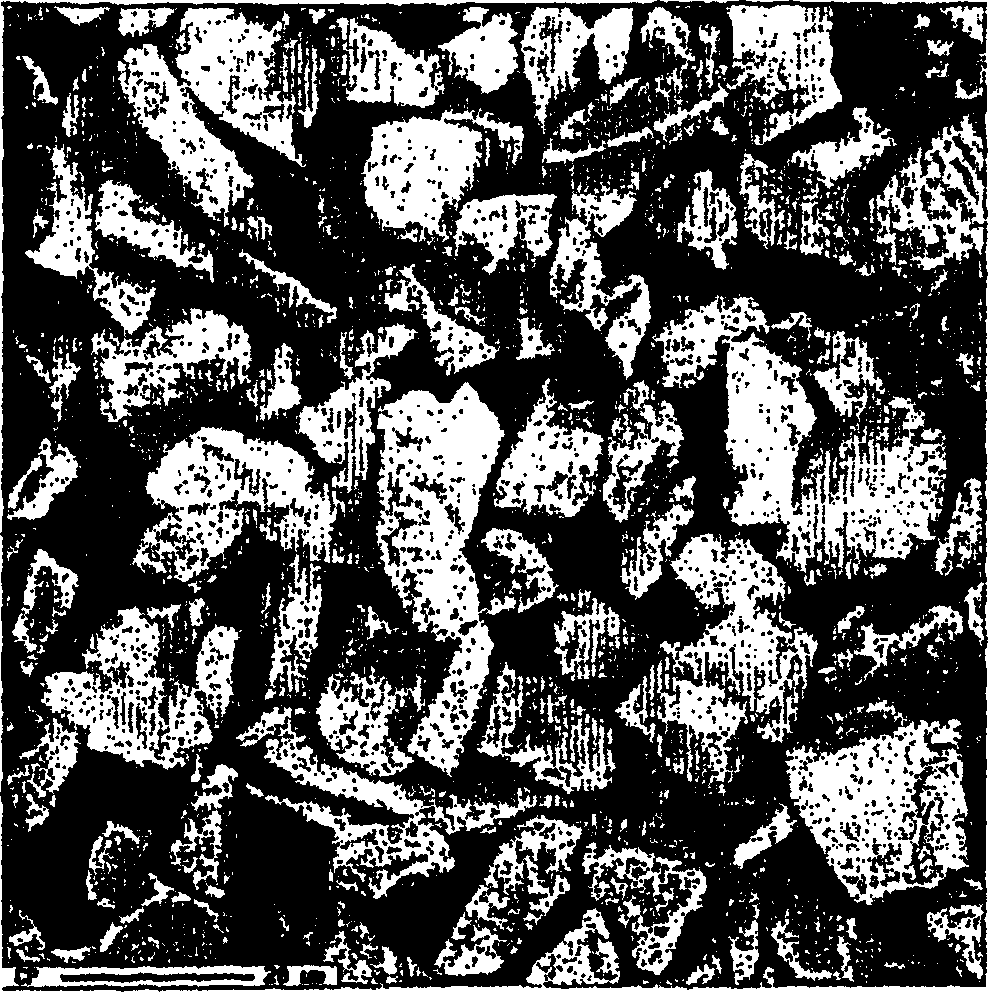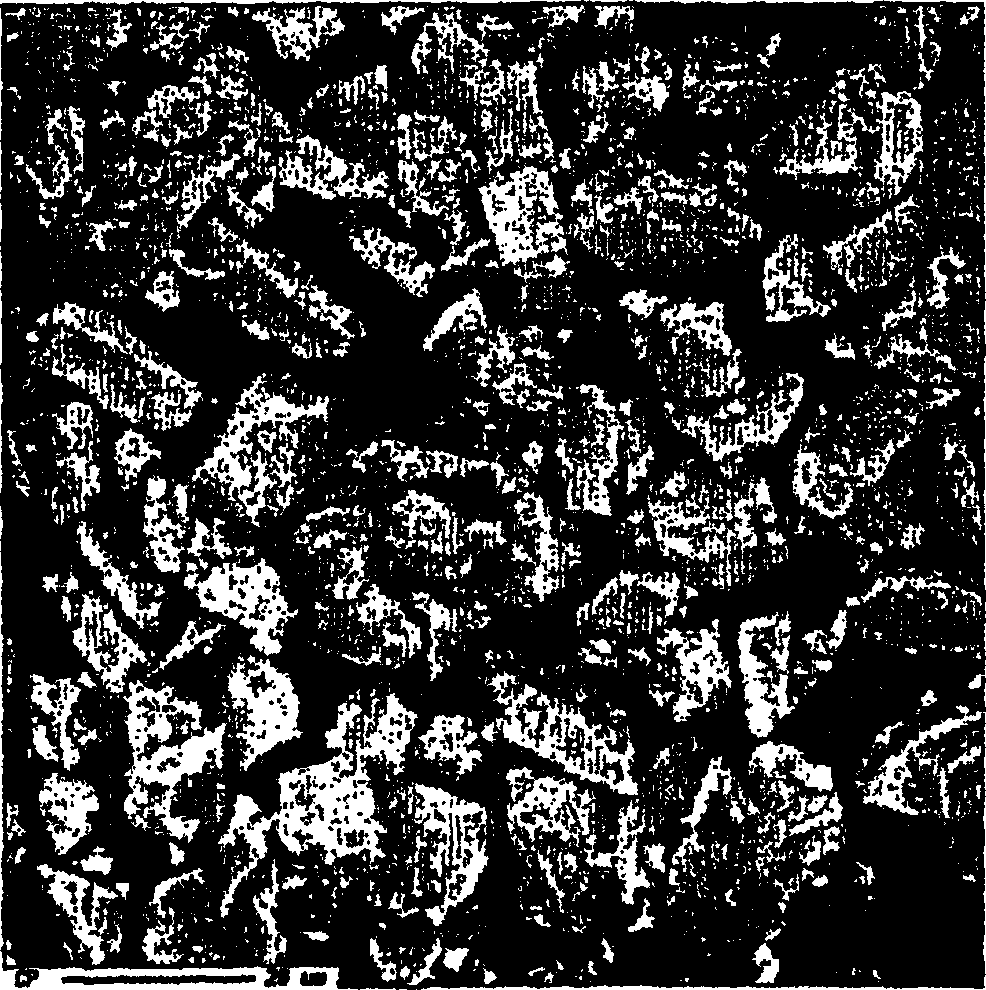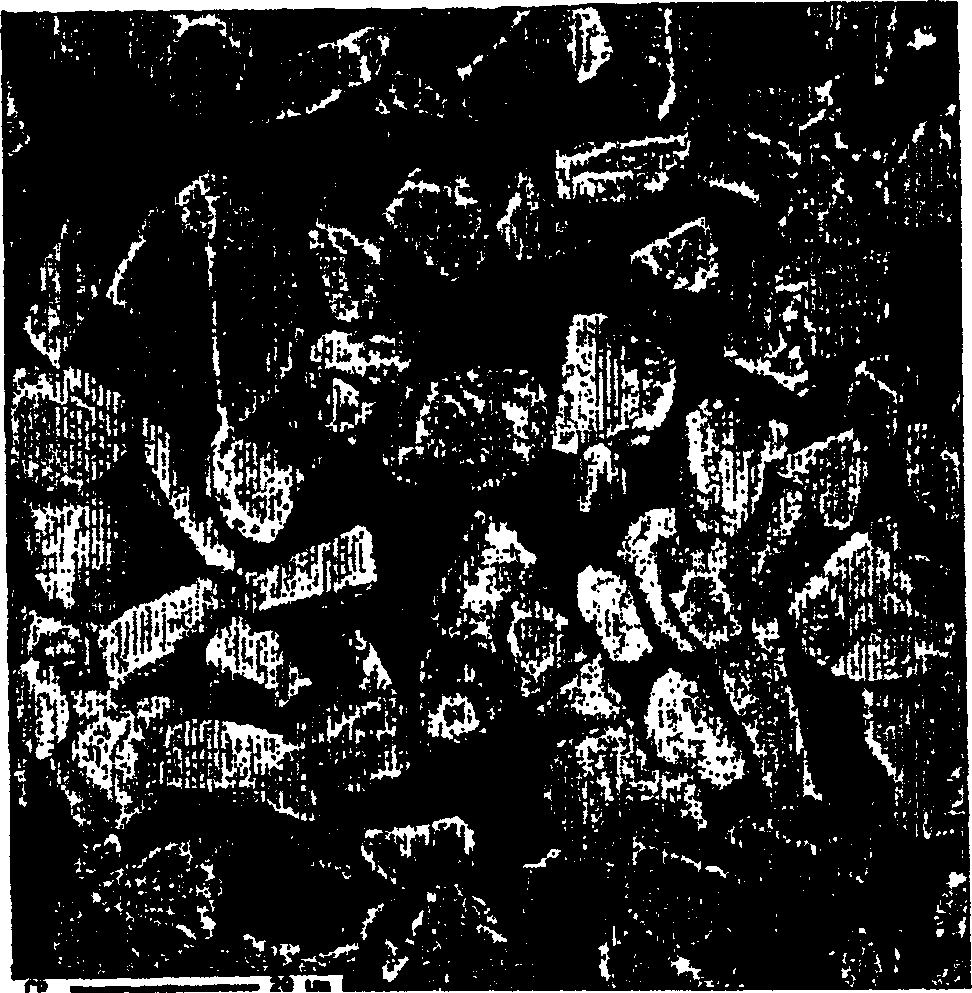Method for cleaning sic particles
A technology of silicon carbide particles and particles, applied in chemical instruments and methods, fine working devices, separating solids from solids with airflow, etc., can solve problems such as no economic feasibility
- Summary
- Abstract
- Description
- Claims
- Application Information
AI Technical Summary
Problems solved by technology
Method used
Image
Examples
Embodiment 1
[0068] SiC particles were processed as described above and are shown in Figure 4 middle.
[0069] First, the material was classified in an Alpine air classifier model 50ATP at 4500 rpm or 235 rad / sec. This requires the removal of coarse particles. Particles (agglomerates) larger than 27 μm were processed in a jet mill of type AFG100, in which the agglomerates were broken up, with 98% of the yield obtained being in the fraction smaller than 27 μm.
[0070] The fine particle fraction from step (a) is thereafter classified in the aforementioned Alpine unit at a speed of 10,000 rpm or 520 radians / second in order to remove particles smaller than about 3 μm, which is smaller than the desired size in the product. In this step, 96.5% by weight of the output was obtained as pre-fractionated product, calculated from the weight of the fine particle fraction leaving step (a).
[0071] Therefore, the total yield is 94.5%. 5 to 8 show the results of Example 1.
Embodiment 2
[0073] Example 2 was carried out to show that the method of the invention can be used on an industrial scale. Industrial scale tests were carried out in an air classifier of type SAC200 (Sintef Air Classifier 200) to demonstrate that the silicon carbide priory used for cutting silicon wafers meets FEPA F500 standards. The air classifier SAC200 has a production capacity of up to 800 kg / h. The test procedure was equivalent to Example 1 except that the jet mill was omitted.
[0074] In the first step of classification, a rotation speed of 850 rpm corresponding to 45 rad / s was used.
[0075] In both the first and second steps, 350 kg of polluting material was fed to the classifier per hour.
[0076] At this speed, coarse particles / agglomerates are separated from finer material. Angular velocity and local gas velocity provide the maximum particle size corresponding to FEPA standard F500.
[0077] In step two, the rotation speed was increased to 5500 rpm corresponding to 290 rad...
PUM
 Login to View More
Login to View More Abstract
Description
Claims
Application Information
 Login to View More
Login to View More - R&D
- Intellectual Property
- Life Sciences
- Materials
- Tech Scout
- Unparalleled Data Quality
- Higher Quality Content
- 60% Fewer Hallucinations
Browse by: Latest US Patents, China's latest patents, Technical Efficacy Thesaurus, Application Domain, Technology Topic, Popular Technical Reports.
© 2025 PatSnap. All rights reserved.Legal|Privacy policy|Modern Slavery Act Transparency Statement|Sitemap|About US| Contact US: help@patsnap.com



